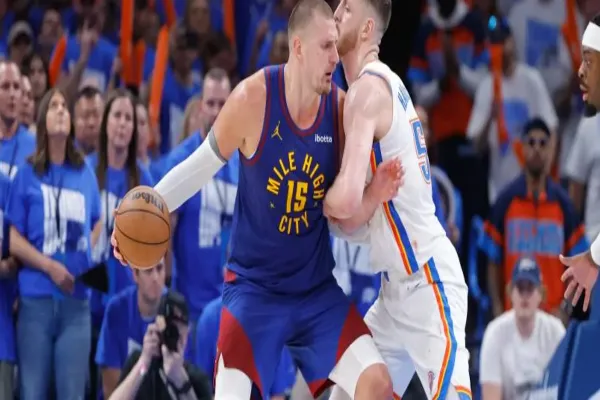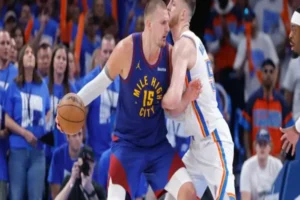Betting the Big Games: How NBA Moneylines Shift Before Tip-Off


In the world of sports betting, few markets generate as much attention or volatility as the NBA moneyline. Before tip-off, odds can move dramatically, sometimes within minutes, as bettors, oddsmakers, and data models react to shifting information. From late injury updates to betting volume from the public and sharp bettors, the hours leading up to a primary NBA matchup often reveal how unpredictable and dynamic the modern betting ecosystem has become.
Understanding the Moneyline
At its core, the moneyline is the simplest type of wager: bettors pick which team will win outright. Each team is assigned odds that reflect its perceived chances of winning. A favorite is given unfavorable odds (for example, -150), meaning bettors would need to stake more to back the team expected to win. The underdog receives favorable odds (for example, +130), offering a larger potential return for those backing the less favored side.
While the concept is straightforward, the numbers themselves tell a deeper story. In many sportsbooks, the current NBA moneylines are not static figures because they shift constantly in response to real-time developments, betting patterns, and sportsbooks’ risk management strategies. Tracking how and why these odds move can provide valuable insight into market sentiment and, in some cases, which side of a matchup is drawing professional attention.
Early Lines and Initial Reactions
Moneylines for NBA games are typically released a day or two in advance, giving sportsbooks time to gauge early action. In those first hours, opening lines are influenced largely by statistical models and power rankings that evaluate team performance, rest days, travel schedules, and injury reports.
For marquee matchups, think Celtics versus Lakers or Warriors versus Bucks, oddsmakers anticipate heavy action from both recreational and professional bettors. When the line opens, early bettors often look for perceived inefficiencies before the market stabilizes. If sharp bettors quickly back one side, sportsbooks may adjust the moneyline to balance their exposure. For example, if the Milwaukee Bucks open at -120 and sharp bettors see value in that price, heavy early wagers can push the line to -140 within hours.
This early stage sets the tone for how the rest of the betting market reacts. A major shift within the first few hours doesn’t necessarily indicate which team is “better,” but it does suggest where informed bettors think the odds were mispriced.
The Influence of Public Money
As game day progresses, a different type of betting activity begins to shape the line: public money. Recreational bettors—often motivated by fandom, narrative, or recent team performance—tend to place their bets closer to tip-off. Public money can create what analysts call “line inflation,” where the favorite’s odds become less favorable as casual bettors overwhelmingly back them.
For instance, if the Los Angeles Lakers are hosting a nationally televised game, sportsbooks might see a surge of late money on the Lakers regardless of the matchup’s true balance. To manage this imbalance, bookmakers may adjust the line from -150 to -170, not necessarily because the team’s win probability has changed, but because the betting action demands it.
Sharp bettors often monitor these public-driven movements closely, looking for opportunities to back the underdog once the odds have shifted enough to create value. This push-and-pull dynamic between professional and recreational bettors is one of the defining features of pre-game moneyline movement in the NBA.
Injuries and Late News
Perhaps the most significant factor influencing late moneyline shifts is player availability. The NBA’s compact schedule means that injuries, rest management, and last-minute lineup changes are common. A single update like a star player being ruled out minutes before tip-off, can swing the odds dramatically.
For example, if the Phoenix Suns are favored at -180 with Devin Booker expected to play but he’s announced as inactive during warm-ups, the line might swing to nearly even or even flip in favor of their opponent. In high-profile cases, such late-breaking news can trigger a flurry of bets from both sharp and casual bettors looking to react before the market fully adjusts.
Sportsbooks have improved their response time in recent years, thanks to faster information channels and automated line-setting systems. Still, even a short delay between injury announcements and line adjustments can create brief windows where odds don’t accurately reflect the new circumstances.
Tracking this activity has become a discipline of its own. Analysts use terms like “reverse line movement” to describe situations where the line moves in the opposite direction of public betting trends, a common sign that professional bettors are backing the less popular team.
The Broader Picture
Watching how NBA moneylines move before tip-off is a window into the complexity of modern sports betting. Every adjustment, whether triggered by an injury, a wave of public enthusiasm, or a sharp bettor’s calculated move, reveals how information and perception interact in real time.
In an era where data travels faster than ever and betting markets update in seconds, understanding these shifts offers more than just insight into a single game. It reflects the intricate balance between analytics, timing, and human behavior that defines today’s betting landscape.




